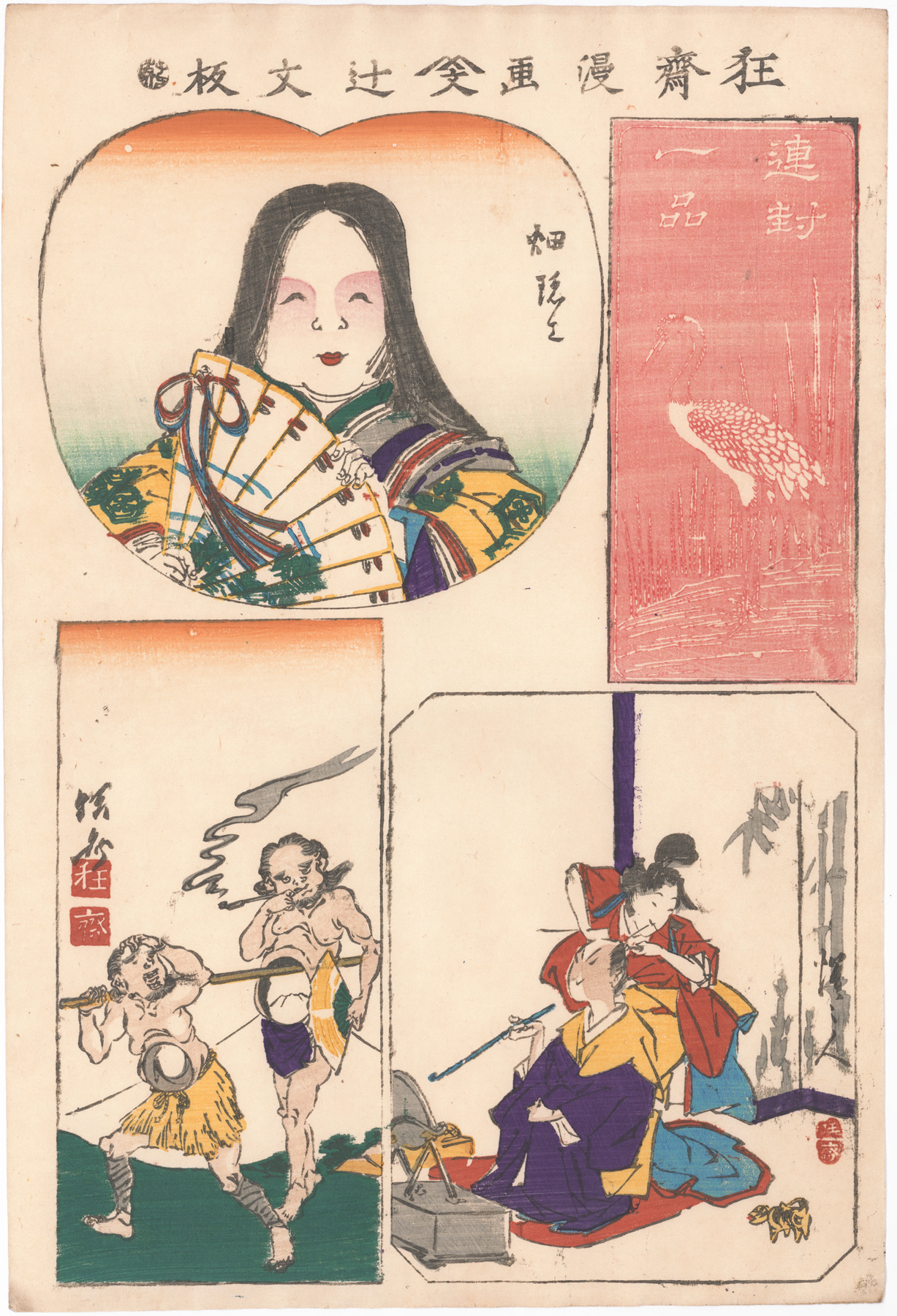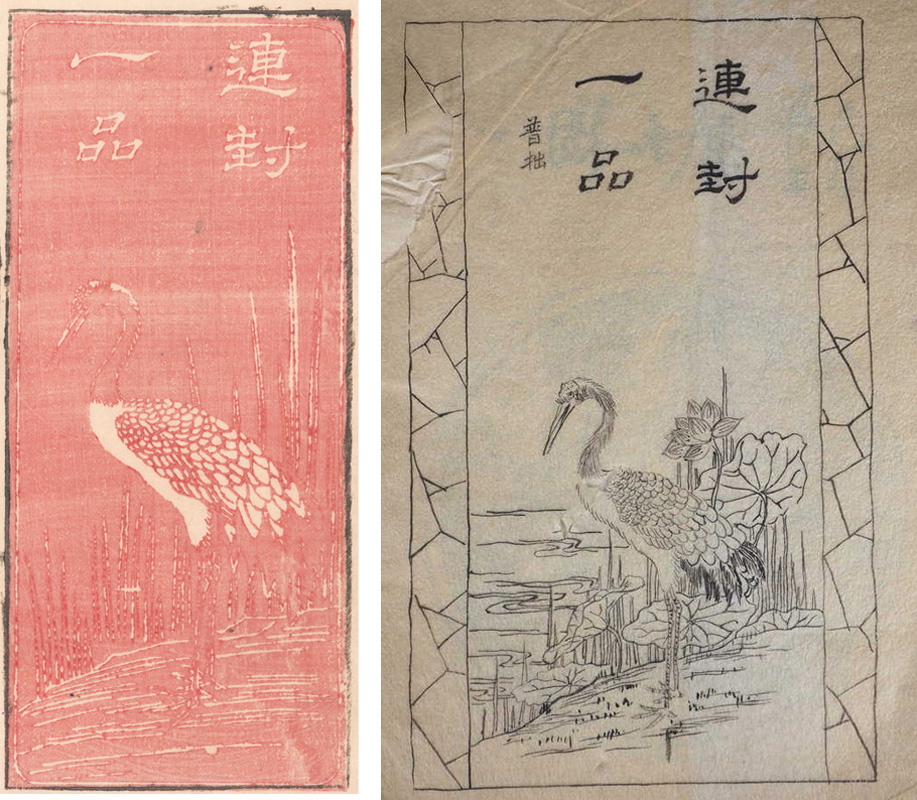About This Print
The three multi-color panels of the print are titled in English in the book Comic Genius: Kawanabe Kyōsai as Ofuku1, Holes in Their Abdomen and Coiffeur, but the upper right panel, depicting a crane and lotus, and bearing the kanji characters 連封一品, is not translated for us. Initially, I was not able to come up with a reasonable translation for these characters, but subsequently I ran into a Bonhams' auction listing for a green glass snuff bottle with an image of a crane and a lotus, with the following note:
The pairing of a crane (yipin niao) and lotus (lianhua) is a rebus for lianfeng yipin (may you continuously be promoted to the first rank). The crane symbolizes first rank [and the lotus is a pun for the word continuous, lian.2] For further discussion, see Bartholomew, Hidden Meanings in Chinese Art (2006), p 108.3
A similar image with the same characters, shown below next to the panel from this print, appears in a an earlier book of woodcuts.
The Series Kyōsai Manga
Source: Comic Genius: Kawanabe Kyōsai, Oikawa Shigeru, Clark Timothy and Forrer Matthi, Tokyo Shinbun, 1996, p. 32-33, 220-225.
This series, which used "legitimate Kano school subjects as their themes" depicted in comic situations, made Kyōsai popular as an ukiyo-e artist. Oikawa Shigeru points out that what made Kyōsai stand out from other period artists who used Kano school themes, such as Hokusai, was his "ability to parody the actual Kano school works" in a "fresh new style" making him "the popular artist for comic prints."
At least ten prints are known to comprise this series and each single sheet includes several different subjects [harimaze-e] with each sheet including at least one comic scene. "This series continued to be printed in the middle of the Meiji period, and several different types of editions exist. At the time, these harimaze prints were cut into individual scenes and the small pieces were used to repair the holes in paper sliding doors and screens. Kyōsai’s humorous scenes were thus enjoyed in the everyday lives of the Japanese people."
1 Ofuku, also known as Ama, Otafuku, Udzume, Uzume and Ama-no-Uzume is the goddess of mirth who at the time of creation brought the sun goddess Amaterasu from her dark cave, bringing sunshine to the world, by her boisterous dance.
2 This explanation of the lotus came from a listing of another object depicting a crane and lotus offered by the auction house Marchant.
3 Bohnam's website https://www.bonhams.com/auctions/18369/lot/168/
Print Details
| IHL Catalog | #1525 | |||
| Title or Description | Egret, Ofuku, Coiffeur, Holes in Their Abdomen 連封一品, お福, 髪結い, 胴に穴あき | |||
| Series | Kyōsai Manga 狂斎漫画 [Cartoons by Kyōsai] | |||
| Artist | Kawanabe Kyōsai (1831-1889) | |||
| Signature |
| |||
| Seal of the Artist | as shown above | |||
| Publication Date |  | |||
| Publisher |  [Marks: 02-064; publisher ref. 548] | |||
| Carver | ||||
| Printer | ||||
| Impression | excellent | |||
| Colors | excellent | |||
| Condition | excellent - slight wrinkling; unbacked | |||
| Genre | ukiyo-e, harimaze-e, giga-e | |||
| Miscellaneous | ||||
| Format | vertical oban | |||
| H x W Paper | 14 5/8 x 9 7/8 in. (37.1 x 25.1 cm) | |||
| H x W Image | 14 x 8 15/16 in. (35.6 x 22.7 cm) note: measurement includes the kanji information at the top of the print | |||
| Collections This Print | Kawanabe Kyosai Memorial Museum | |||
| Reference Literature | Comic Genius: Kawanabe Kyōsai, Oikawa Shigeru, Timothy Clark and Matthi Forrer, Tokyo Shinbun, 1996, p. 225, fig. 128. |
7/28/2021






